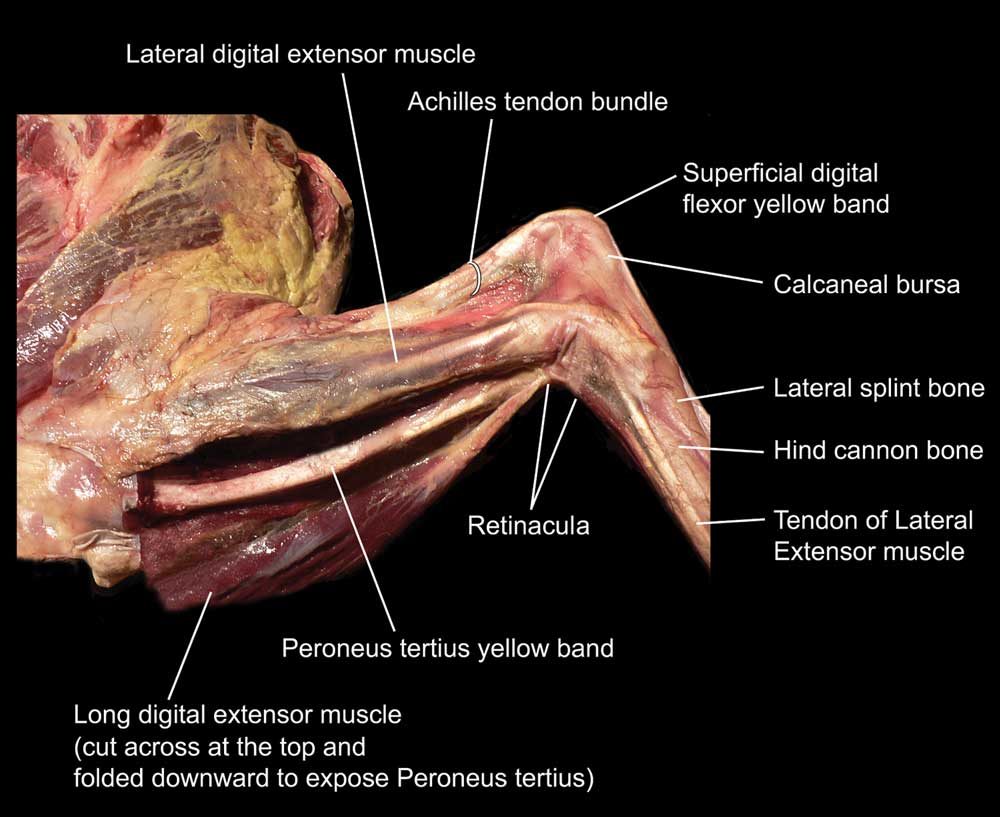American Farriers Journal
American Farriers Journal is the “hands-on” magazine for professional farriers, equine veterinarians and horse care product and service buyers.

In this series, Dr. Deb Bennett examines the equine hind limb. In this installment, Bennett explores the coordinated flexion and extension of the stifle and hock.
Probably the most famous anatomical demonstration that students of equine anatomy regularly see in the dissecting room — and certainly one of the most spectacular and interesting — is the coordinated opening and closing of the central joints of the hind limb, the “classic” hind limb reciprocation.
Coordinated flexion and extension of the stifle and hock are mandated in the horse (and its nearest relatives the zebras, onagers and asses) by a set of tensionally co-adjusted “bands” that parallel the tibia, forming a jointed parallelogram1 in which, if the stifle joint is opened the hock joint must also open and vice-versa (Figures 1 and 2).
The bands are formed by yellow ligaments and by muscles with tendinous cores that have long tendons of insertion. They originate on the femur but insert primarily on the hind cannon bone and calcaneum. They are elastic and thus store energy when, and to the degree that, they are stretched. Thus, not only does the hind limb reciprocating system foster precise…